2012-12-18 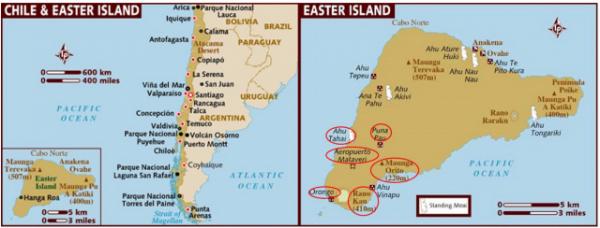
【Aiden in English】
Walking toward our new tour guide this morning, I felt a sense of dread crawling up my stomach. This tour would involve a long hike on the side of the crater, covering at least 10 miles. When our tour group arrived at the archaeological site of Ahu Vinapu, the heat began to intensify. Before I could change my mind, I trekked up the hill. But not long after, I was exhausted from climbing, and my feet were sore from walking on pointy and slippery rocks. I never imagined I would reach the summit of Rano Kau, but I eventually challenged myself in such uncomfortable, hot, and humid weather. When I took my last step, I was greeted with amazing sights, and I could not believe I was standing on the edge of a one-mile-long crater. The crater was filled with water, reeds, and green algae on the surface. Near the southern tip of the crater was the oldest stone village, named Orongo, which contained a row of 53 house-like caves directly facing the Pacific Ocean, overlooking Motu Nui, Motu Iti, and Motu Kao-Kao. It was also the competition centre for birdmen who became winners by collecting Sooty Tern eggs for their king and swimming safely to the islets of Rapa Nui every September. The doors looked extremely small, and only street dogs were capable of crawling in and out without bumping their heads or tripping their feet in modern times. The group walked along the crater's edge to a pavilion, where I jumped onto the bus and dashed back to the hotel. At noon, I ate a delicious lunch of marinated lamb chops. The juice oozed down my chin as the wonder of the taste ran through my body. I met our afternoon tour guide after a great meal and a hot shower. I was surprised to see the same lady who guided us to Rano Raraku and Moai Quarry yesterday afternoon. This time, we would see caves along the seashore of West Easter Island, where the Rapa Nui native people protected themselves from enemy attacks during times of war. The first cave wasn't awe-inspiring, but it was an excellent hiding place. The door was narrow, and only one person was allowed to get in at a time. The second one was pitch-black and led into the Pacific Ocean. With flashlights, I knelt down at the holes where the ocean came into view at the nearest distance. The sightseeing became astonishing as the pleasure brought a fresh sea breeze through two big holes on the side of sheer cliffs, although I heard that my legs trembled, my heart pounded, and my lips quivered overwhelmingly. Like many others, the beach in this area had no sand because Easter Island was a volcanic island. Seven Moai at Ahu Akivi are lined up facing the sea and looking in the direction from which Rapa Nui originally came. This was the only site where Moai did not face inland. It's said that they were the kings and the Seven Explorers because they were the first to discover Easter Island as a safe place for Rapa Nui, who had gone through a civil war back in their homeland. Deep down south, Moai with eyes cheered me up at Ahu Tahai Archaeological Complex. Only Ahu Ko Te Riku was restored with a pair of eyes on Easter Island. The eyes looked creepy, with two large, wide, round eyes featuring black pupils dotted in the centre. After all, I had no hesitation in hitting the road and rushing back to my hotel for a rest. In 1995, Rapa Nui National Park was inscribed as a UNESCO World Heritage Site.
【红霞译】 今早尚未见到导游之前,我知道马上就要沿火山凝灰岩万里长征,徒步跋涉至少10英哩/16,000米,内心不免开始犯怵。起点站设在智利“土地的尽头”复活节岛阿胡·维纳普“太阳之子祭坛”印加祭坛考古遗址,至今仍保留印加帝国石墙建筑工艺,由此被推断早期岛民来自南美洲地区。不等我们开拔,闷热天气早已兴风作浪,来不及打退堂鼓,我下意识地朝火山口方向走去,山路蜿蜒起伏,原野凹凸不平,没过多久我腿酸脚痛,体力很快就吃不消了。 我做梦也没想到自己能爬上拉诺·考“大火山”淡水湖口,不过最终我还是面对挑战成就了自身,并且历经闷热潮湿的气候煎熬。到达目的地时,我发现眼前壮观的景色出神入化,该火山口直径足有1英哩/1,600米宽,口内积水成湖,湖面长满了芦苇和绿藻植物;火山口南端礼仪村遗迹内,53栋看上去像山洞一样大小的石头房屋面朝太平洋,莫图努伊“大岛”、莫图伊蒂“小岛”和莫图考考“海蚀柱”由远而近,依次排列。传说古代每年九月,各族“鸟人”都要在此进行竞技比赛,谁先从大岛拿到第一个黑燕鸥下的鸟蛋并成功游回礼仪村,未来一年他的首领将有权统治复活节岛。一、两个世纪以前建造的石房正门实在小得可怜,如今恐怕只有东游西逛的流浪狗儿才会轻车熟路,灵光得既碰不到头也歪不着脚。
我们绕火山口周围转了好半天,终于在游客服务部歇息下来。我归心似箭,趁机搭车返回酒店。午餐的红烧羊排非常好吃,汁浓滋补脸颊,肉香沁润心脾。 美食穿肠,热浴过身,我整装待发。出人意料地,今天下午的导游竟是昨天带我们参观拉诺·拉拉库“槽型火山”淡水湖及采石场的那位土著阿姨。我们按计划出征复活节岛西海岸,那里有为防御外来敌人追杀而挖建的秘密地洞:第一个地洞深入内地,洞门很小,一次只能容下一人进出,防止敌人蜂拥而入,起到隐蔽藏身的功效,除此而外,没有其它什么特别可言;第二个则不同,地洞里面黑咕隆咚的,伸手不见五指,其尽端直通太平洋,我弯腰屈膝钻进洞内,借助手电筒发出的微光摸索前进,这时海风顺着两个洞口和煦地扑面吹拂,洞内别有天地,而洞外悬崖峭壁,惊涛拍岸,我禁不住两腿发抖,心跳如雷,嘴唇上下不停地打着哆嗦。 西部海岸到处一派黑色砂砾,没有任何像模像样的海滩,这跟复活节岛火山地貌有关。阿胡·阿基维“拓荒者祭坛”上七人摩艾石像面向太平洋,昂首远望土著居民的故乡,这是全岛唯一没有朝向岛内的雕像群。这七位摩艾不仅是部落酋长首领,而且还是无畏的先驱,正因为他们离乡背井并发现了复活节岛,才使其同胞告别本土战乱,世代生活在人间天堂安居乐业。 再往南下,阿胡·塔海“日落之地”石像群遗址有个全岛唯一长眼睛的摩艾科特利库“修复的眼睛”,硕大无比的眼珠子黑幽幽阴森森,看上去让我心惊肉跳。 到此为止,我只想赶紧离开这里,别无它求。
1995年,拉帕努伊国家公园被联合国教科文组织纳入《世界遗产名录》。
Today in History(历史上的今天): 2010: 节日热情(Holiday Enthusiasm)
2009: 新西兰奥克兰异乡重逢(Reunion in Auckland, NZ) 2009: 新西兰奥克兰(Auckland, New Zealand) 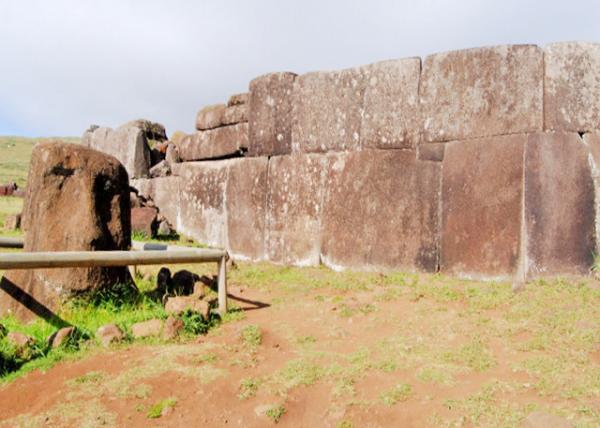 Ahu Vinapu Archaeological Site, Stonewall Faced towards Sunrise @ Winter Solstice w/ Extraordinary Stonemasonry Consisting of Large, Carefully Fitted Slabs of Basalt. Ahu Vinapu Archaeological Site, Stonewall Faced towards Sunrise @ Winter Solstice w/ Extraordinary Stonemasonry Consisting of Large, Carefully Fitted Slabs of Basalt.
(阿胡·维纳普考古遗址·冬至时石墙面向日出,精湛的砌石技艺使得大玄武岩石板间天衣无缝) 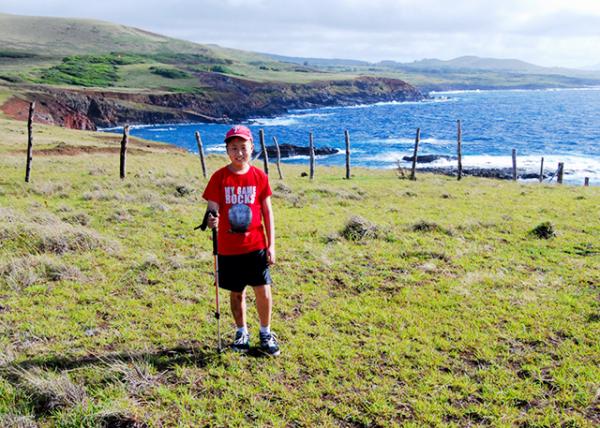 Southeast Coast on the Most Weathered Poike w/ relatively Stoneless Soil Southeast Coast on the Most Weathered Poike w/ relatively Stoneless Soil
(东南海岸·波伊克“黎明的地方”火山风化严重,土壤少有石头 12-18-2012) 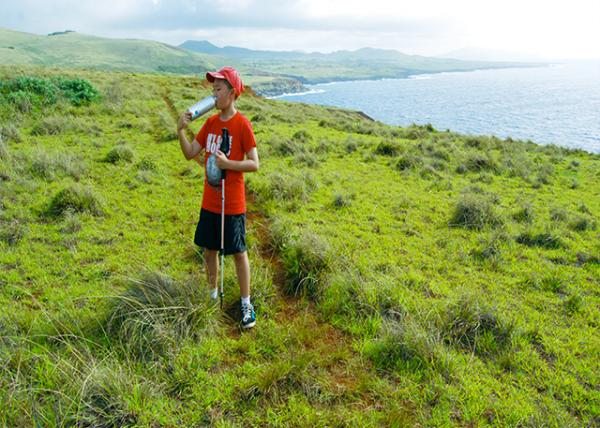 Southeast Coast Hiking Trail on Poike Ditch Southeast Coast Hiking Trail on Poike Ditch
(波伊克火山沟·东南海岸登山步道 12-18-2012) 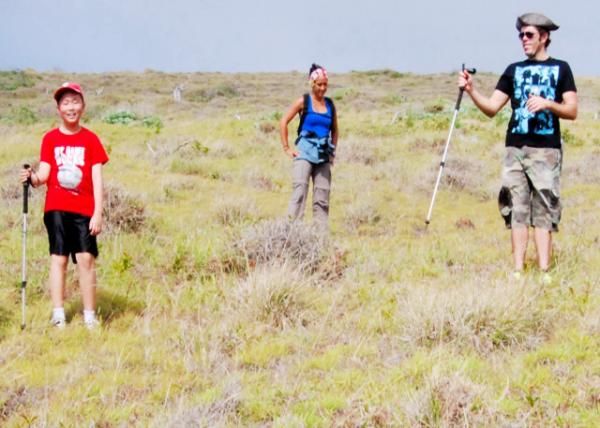 10-Mile/16-Km Hiking Trail along Southeast Coast 10-Mile/16-Km Hiking Trail along Southeast Coast
(10英里/16公里东南海岸登山步道 12-18-2012)
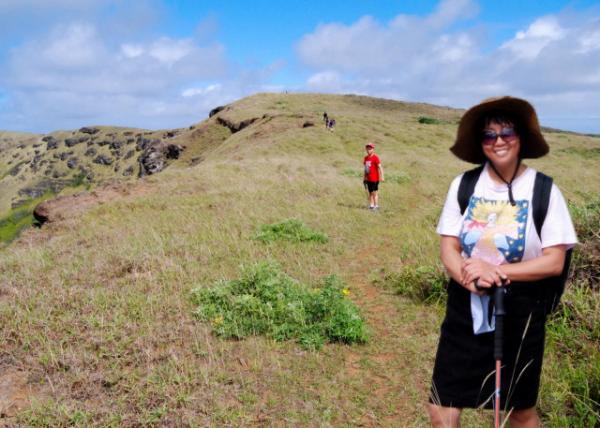 Hiking along the Crater Rim on the Way to the Summit of Rano Kau Hiking along the Crater Rim on the Way to the Summit of Rano Kau
(火山边缘通往拉诺·考峰淡水湖制高点的登山步道 12-18-2012)
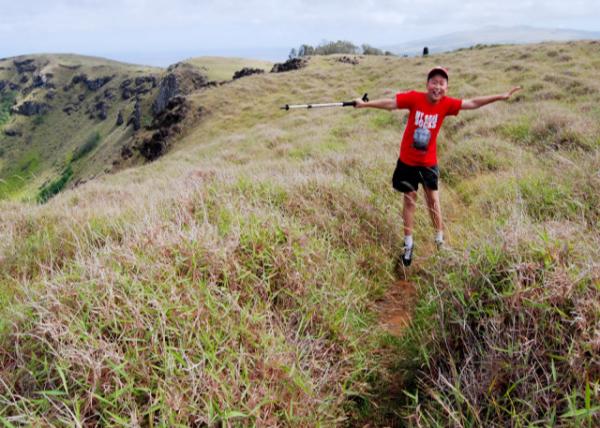 Flourishing Vines in Low Vegetation Flourishing Vines in Low Vegetation
(强劲生长的低植被藤蔓 12-18-2012)
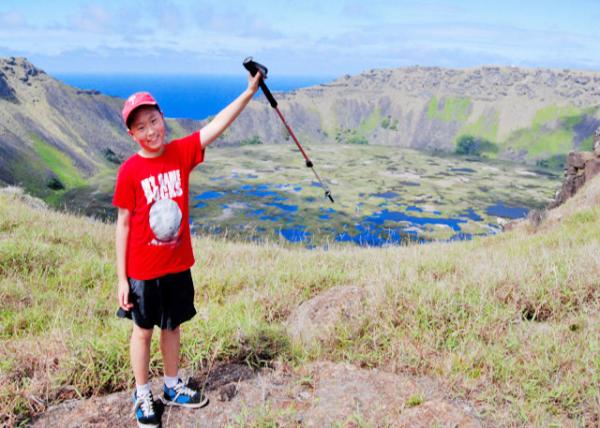 Rano Kau above Sea Level of 324-m/1,063-ft Rano Kau above Sea Level of 324-m/1,063-ft
(拉诺·考峰淡水湖·海拔324米/1,063英尺 12-18-2012)
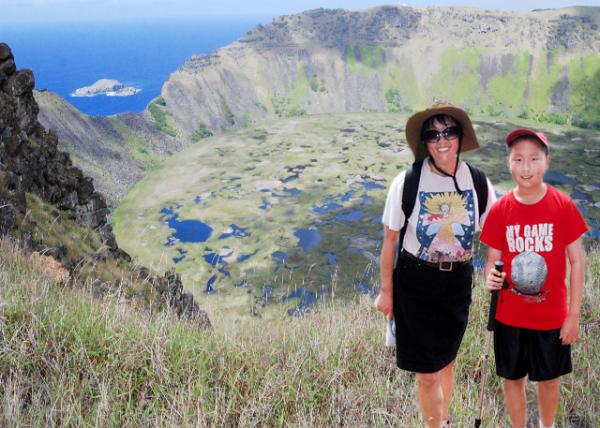 A Gap @ the Southern End of the Crater Wall, Rano Kau A Gap @ the Southern End of the Crater Wall, Rano Kau
(拉诺·考峰淡水湖·在火山口墙南端有一个缝隙 12-18-2012)
 Inside Walls of the Crater Sloped @ an Angle Between 45°& 65° Inside Walls of the Crater Sloped @ an Angle Between 45°& 65°
(大火山口内壁倾斜角度介于45°—65°之间 12-18-2012) 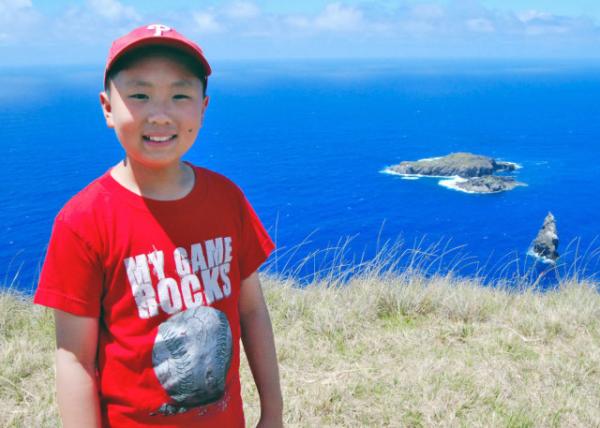 Motu Iti between the Larger Motu Nui and the Sea Stack of Motu Kao Kao Motu Iti between the Larger Motu Nui and the Sea Stack of Motu Kao Kao
(小岛介于大岛和海栈之间 12-18-2012) 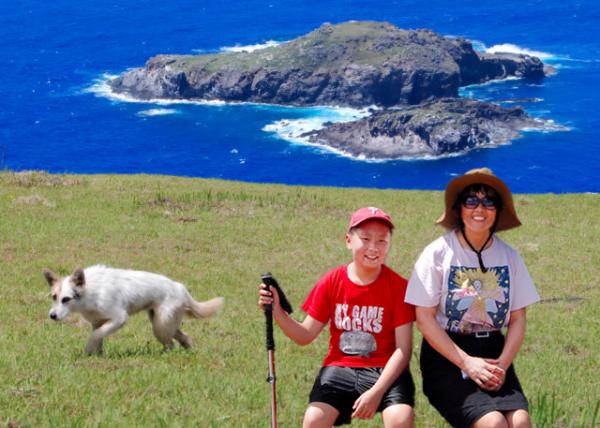 Motu Nui vs. Motu Iti (大岛与小岛 12-18-2012) Motu Nui vs. Motu Iti (大岛与小岛 12-18-2012)
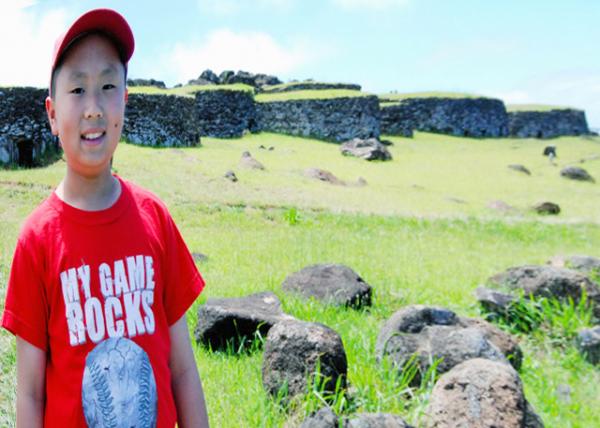 53 Stone Houses @ Orongo Village 53 Stone Houses @ Orongo Village
(奥龙戈“信使之地”礼仪村·53栋石房 12-18-2012) 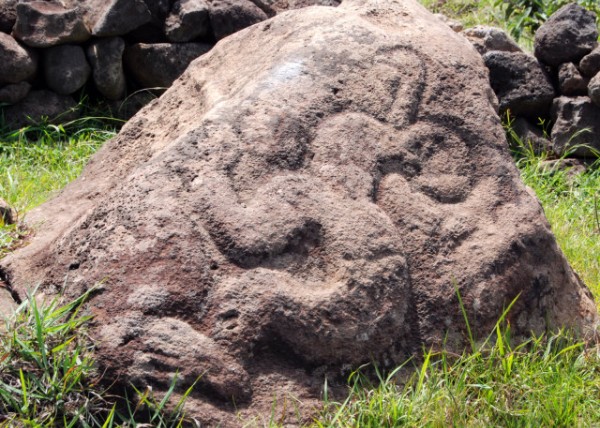
Birdman Carved from Red Scoria (红色火山渣鸟人石刻)
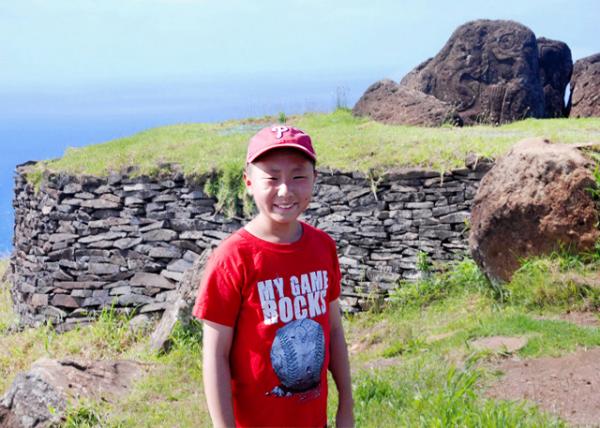 Petroglyphs on Red Scoria & Makemake w/ 2 Birdmen @ Orongo Village Petroglyphs on Red Scoria & Makemake w/ 2 Birdmen @ Orongo Village
(奥龙戈村·火山渣石岩画与两个鸟神星人 12-18-2012)  Ahu Akivi w/ All of Equal Shape & Size Ahu Akivi w/ All of Equal Shape & Size
(阿胡·阿基维——七人面海的摩艾形状大小相同的石像 12-18-2012)
 Ahu Akivi, Exactly Facing Sunset During the Spring Equinox & Having Their Backs to the Sunrise During the Autumn Equinox Ahu Akivi, Exactly Facing Sunset During the Spring Equinox & Having Their Backs to the Sunrise During the Autumn Equinox
(阿胡·阿基维——七人摩艾石像春分时面向日落而秋分时背朝日出)
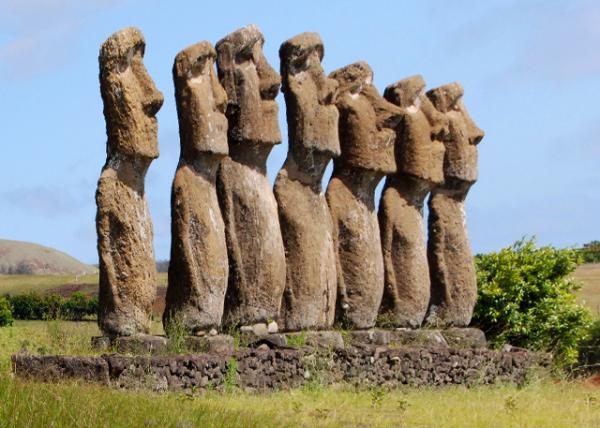 Set up as a Celestial Observatory around the 16th Century. Set up as a Celestial Observatory around the 16th Century.
(阿胡·阿基维——七人面海摩艾祭坛被视为16世纪前后建立的天文台) 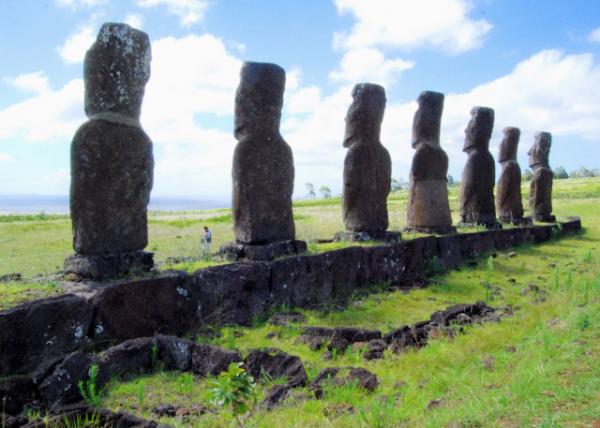 Ahu Akivi, the Only Site Where Moai Were Not Facing Inland Ahu Akivi, the Only Site Where Moai Were Not Facing Inland
(阿胡·阿基维——全岛唯一没有朝向岛内的摩艾雕像群) 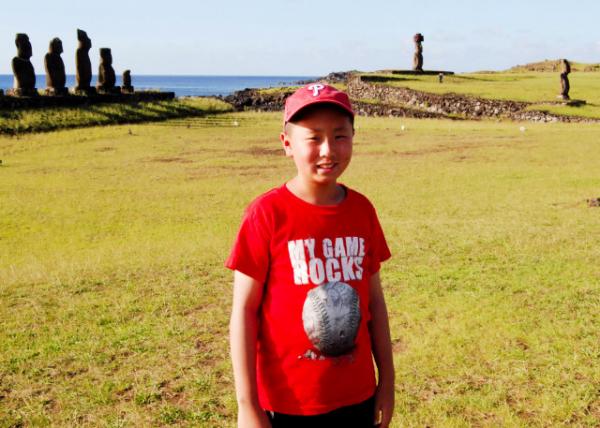 Ahu Vai Uri, Ahu Tahai and Ahu Ko Te Riku @ Tahai Ceremonial Complex Ahu Vai Uri, Ahu Tahai and Ahu Ko Te Riku @ Tahai Ceremonial Complex
(塔海礼仪石像群·瓦伊乌里“黑水”祭坛、塔海祭坛和科特利库“修复的眼睛”祭坛 12-18-2012)
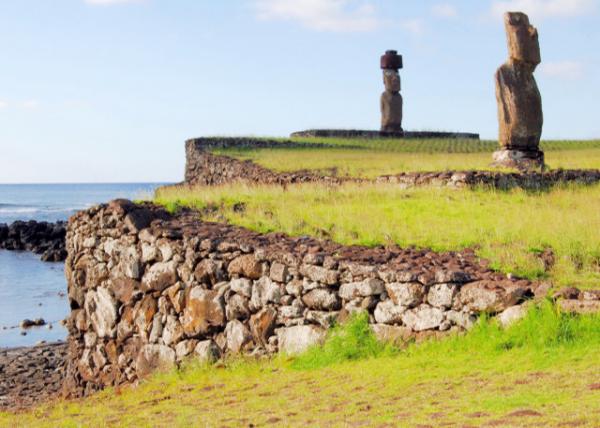 Ahu Tahai in Front of Ahu Ko Te Riku Ahu Tahai in Front of Ahu Ko Te Riku
(前:塔海祭坛 | 后:科特利库祭坛) 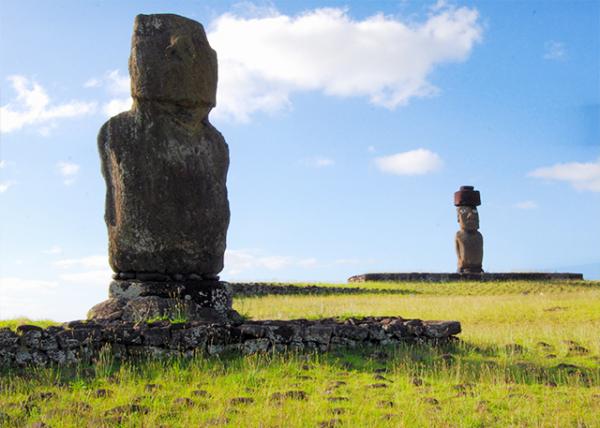 Ahu Tahai Built in around 700 AD Ahu Tahai Built in around 700 AD
(塔海祭坛·约建于公元700年 )
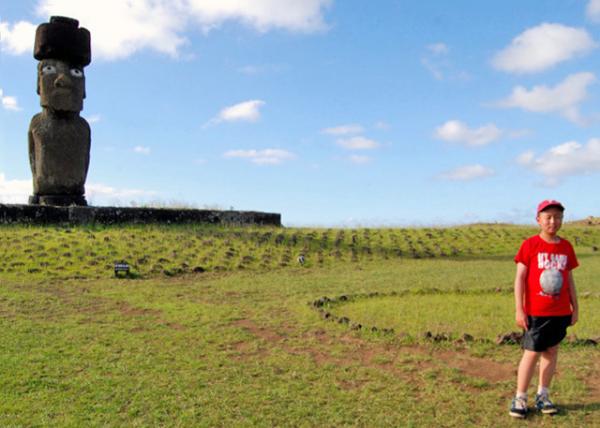 Ahu Ko Te Riku w/ Restored Eyes, Made from Coral & Obsidian & the Only Complete Moai on Easter Island Ahu Ko Te Riku w/ Restored Eyes, Made from Coral & Obsidian & the Only Complete Moai on Easter Island
(阿胡·科特利库——复活节岛上唯一用珊瑚和黑曜石修复眼睛、五官俱全的摩艾石像 12-18-2012) 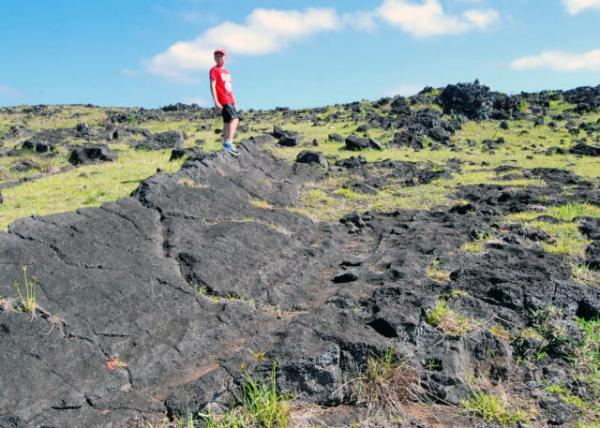 West Coast Hiking Trail (西海岸登山步道 12-18-2012) West Coast Hiking Trail (西海岸登山步道 12-18-2012)
 Mirador Hanga Kioe w/ Lava Rock Formations Mirador Hanga Kioe w/ Lava Rock Formations
(老鼠湾瞭望台·熔岩岩层 12-18-2012)
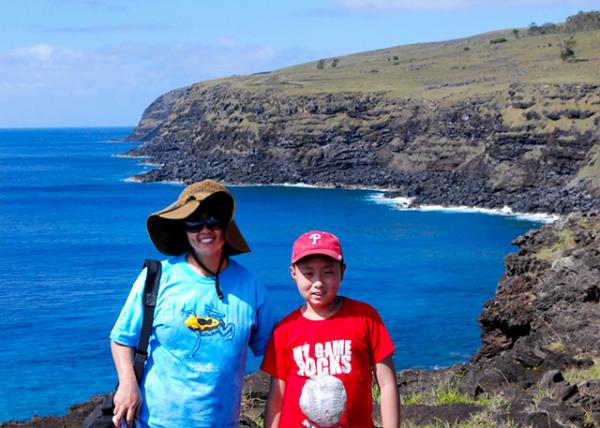 Sea cliffs on the West Coast, Showing Steep Talus Slopes of Boulders & Cobbles in the Beach Position Sea cliffs on the West Coast, Showing Steep Talus Slopes of Boulders & Cobbles in the Beach Position
(西岸海崖·海滩位置有陡峭的巨石和鹅卵石岩屑坡 12-18-2012) 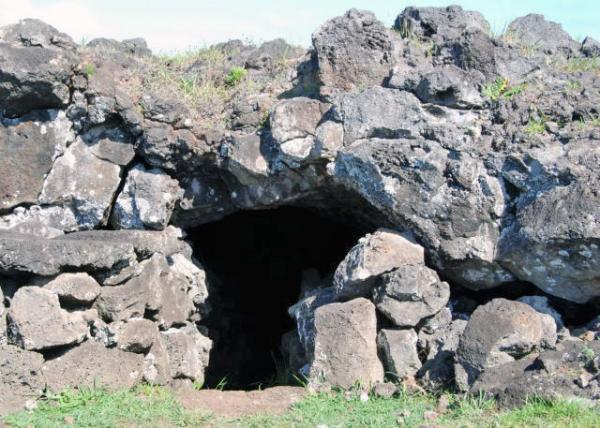
Ana Te Pahu, Large Lava Tubes w/ an Overgrown Garden of Sweet Potatoes, Taro & Bananas (帕胡“鼓”洞·大型熔岩道里长满了红薯、芋头和香蕉的花园) 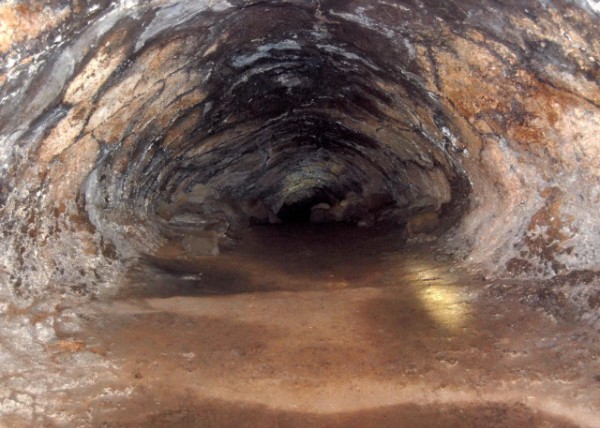
Ana Te Pahu, the Largest Cavern on Easter Island, Formed by Ancient Volcanic Lava Tubes (帕胡洞穴·复活节岛上最大的洞穴,由古老的火山熔岩管形成)
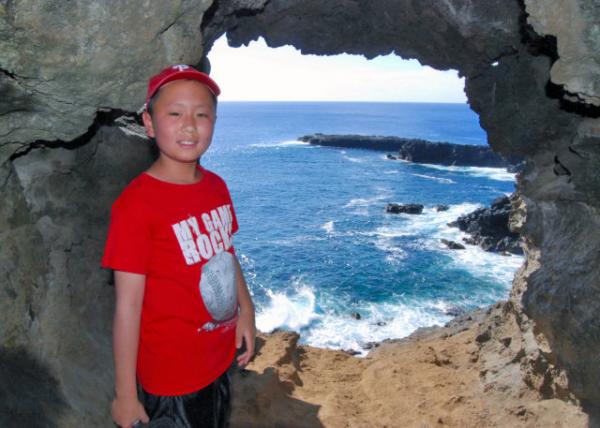 Ana Kai Tangata, View of the Pacific Ocean from Inside of the Sea Cave Ana Kai Tangata, View of the Pacific Ocean from Inside of the Sea Cave
(凯·坦加塔“食人族”洞穴——从海蚀洞内观看太平洋 12-18-2012)

Marinated Lamb Chops @ Explora Rapa Nui (复活节岛探索酒店·红烧羊排 12-18-2012) 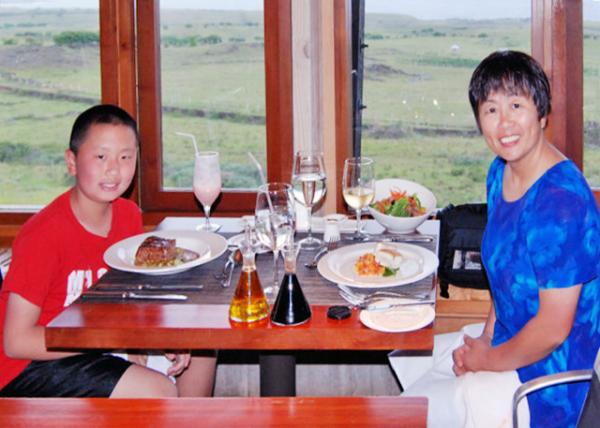 Dinner @ Explora Rapa Nui Dinner @ Explora Rapa Nui
(复活节岛探索酒店·晚餐 12-18-2012) Crosslinks(相关博文):
Chile(出游智利)
South America(漂流南美洲) 小学四年级(4th Grade) |
